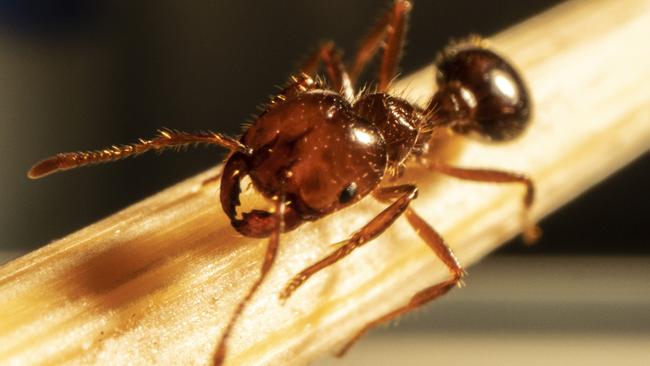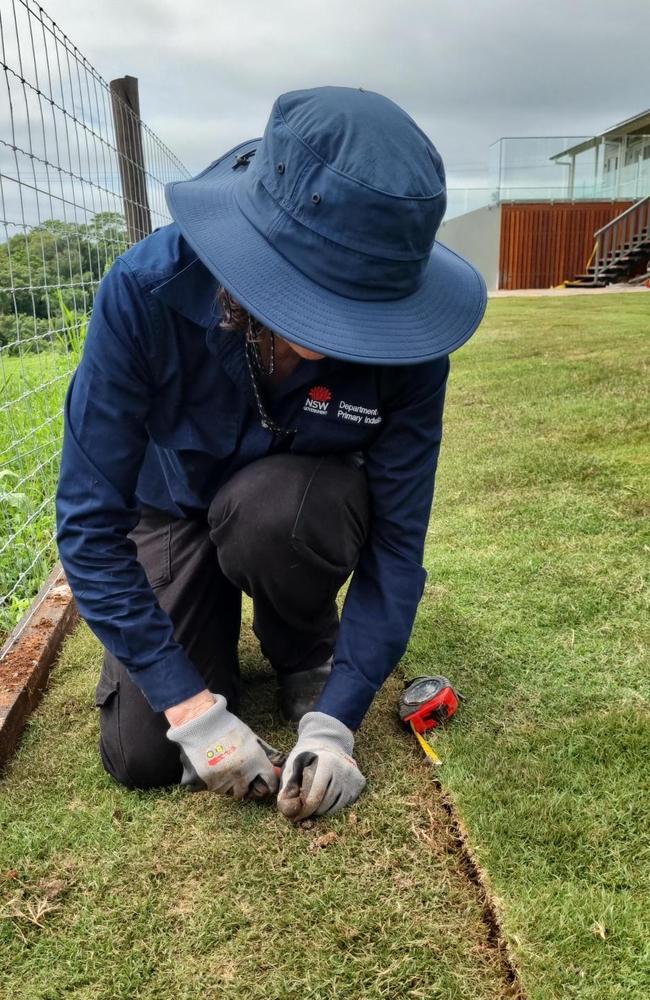Fire ants detected at Clunes in northern NSW on Thursday after arriving in turf delivered from southeast Queensland
Fire ants dubbed “tiny killers” have been detected in northern NSW after hitching a ride from Queensland, prompting fears that state’s issue with the pests could cause a “national disaster”.

Regional News
Don't miss out on the headlines from Regional News. Followed categories will be added to My News.
Fire ants dubbed “tiny killers” have been detected in northern NSW after hitching a ride from Queensland, prompting fears that state’s issue with the invasive pests could cause a “national disaster”.
The discovery of the ants which travelled in turf delivered from southeast Queensland to the village of Clunes, between Lismore and Byron Bay, marks the fourth time the ants have been reported in northern NSW since late last year.

NSW biosecurity workers began eradication efforts after a vigilant landscaping contractor raised the alarm at a private property in the Lismore local government area on Wednesday.
It follows detections at Murwillumbah in the Tweed Shire in November 2023 and at the same site in May this year, as well as at Wardell in the Ballina Shire in July.
Invasive Species Council advocacy manager Reece Pianta said authorities had to “prevent the spread of these tiny killers”.

“I’ve been to fields with hundreds of fire ant nests less than 50 metres from turf farm production areas (in Queensland). This is a recipe for a national fire ant disaster,” he said.
“Fire ants are one of the world’s worst super pests, and their unchecked spread will result in economic damage greater than that caused by cane toads, rabbits, feral cats and foxes combined.”
Experts including Southern Cross University entomology professor Nigel Andrew have warned the pests – which swarm and pack a painful sting – spread rapidly and could result in “devastating” consequences, including the closure of public areas.
On Wednesday, contractor working in Clunes was installing pallets of turf received from southeast Queensland when they spotted the ants.
Within two hours, detection dogs, the Department of Primary Industries and Regional Development (DPIRD) biosecurity division and NSW workers from the National Fire Ant Eradication Program were on site.

A DPIRD spokeswoman said “biosecurity team members used sniffer dogs and systematically searched around 140 square metres of turf to locate the ants” and treatment would “ensure that the area is free from ants”.
Samples were collected and taken to the Wollongbar Primary Industries Institute, where entomologists confirmed the detection at 1.17pm on Wednesday.

Several queens and worker ants were found and removed. The laid and remaining turf was due to be treated to ensure the dangerous ants were totally eradicated.
The DPIRD confirmed Individual Biosecurity Directions were served on the turf supplier and landscape contractor to ensure the turf was not moved again.

“In collaboration with the NSW team, the National Fire Ant Eradication Program is undertaking investigations with the Queensland-based lawn turf supplier to ascertain why there were fire ants in the turf despite appropriate documentation being supplied that certified the turf was treated before transport” the spokeswoman said.
Following the detection, the Invasive Species Council called on the NSW government to “urgently conduct a suppression and compliance blitz”.

Mr Pianta said the Queensland government needed to bolster its efforts to eradicate the ants.
“To eradicate fire ants we can’t kill most of them, we must systematically treat 100 per cent of the land in the infestation zone,” he said.
“If fire ants spread to other parts of Australia it will undermine eradication efforts and put humans and animals at risk.”

“An immediate boost in 2025 can get eradication on track and long term eradication funding after the 2027 expiry date can get the job done.”
A Biosecurity Emergency Order is currently in place to regulate the movement of high-risk materials from fire ant infested areas, like the Gold Coast.
Got a news story? Email: toni.moon@news.com.au




